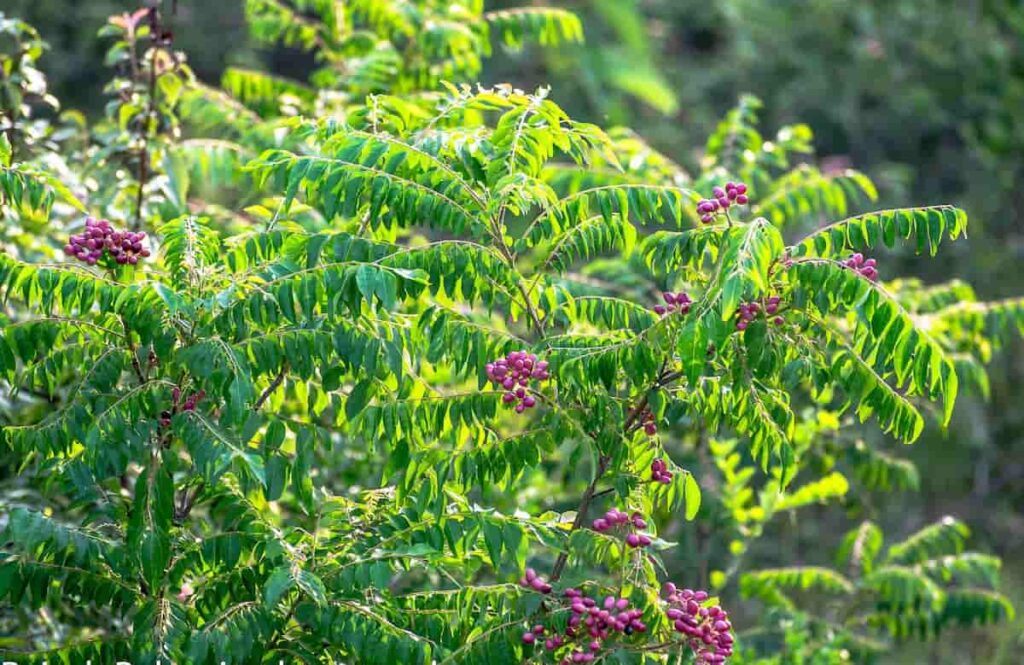- This topic is empty.
- AuthorPosts
- Febuari 19, 2025 at 12:36 um #570146

The curry plant (Murraya koenigii), commonly known for its aromatic leaves used in cooking, is a popular herb grown in tropical and subtropical regions.
Known for its distinct flavor and numerous health benefits, it thrives under specific growth conditions.
Understanding the growth and yield responses of the curry plant is essential for optimizing its production, particularly in regions like Nigeria, where climate and soil conditions play a significant role.
In this article, we will discuss the factors affecting the growth and yield of curry plants, including environmental conditions, soil requirements, and agricultural practices.
1. Temperature and Climate Conditions
The curry plant is native to the tropical and subtropical regions of India and thrives in warm, sunny climates.
It requires temperatures ranging from 25°C to 35°C for optimal growth, with a minimum temperature of about 20°C. Curry plants are sensitive to frost and cannot tolerate cold conditions, making them unsuitable for regions that experience freezing temperatures.
The plant also requires full sunlight for at least 6 to 8 hours a day to encourage healthy growth and high yields.
In Nigeria, where the climate is predominantly warm, curry plants are well-suited to the environment, particularly in the southern and central parts, which offer consistent temperatures and humidity levels. Too much shade can reduce growth and yield, so it’s essential to plant curry plants in well-lit areas.
2. Soil Requirements and Fertility
Curry plants thrive in well-drained, loamy soils rich in organic matter. The soil should be slightly acidic to neutral, with a pH level ranging from 6.0 to 7.5. Well-drained soils are crucial to prevent waterlogging, which can lead to root rot and other diseases.
The addition of organic compost or well-rotted manure can significantly improve soil fertility, providing essential nutrients for the plant. While curry plants can tolerate a variety of soil types, they perform best in soils that retain moisture yet allow for proper drainage.
For high yields, it is important to ensure that the soil is not only fertile but also well-aerated, promoting healthy root growth. Before planting, farmers should conduct a soil test to determine nutrient deficiencies and amend the soil accordingly.
3. Watering and Irrigation Practices
Curry plants require consistent watering, especially during the growing season. While the plant is drought-tolerant once established, young curry plants need frequent irrigation to establish deep roots and ensure steady growth. The soil should be kept moist but not waterlogged.
Over-watering can lead to root rot, while underwatering can stunt growth and reduce yields. In regions with irregular rainfall, farmers may need to implement irrigation systems to maintain optimal soil moisture.
Drip irrigation is ideal for curry plants as it delivers water directly to the roots, reducing water wastage and preventing waterlogging. Adequate watering is particularly critical during the flowering and fruiting stages, as it influences the quality and quantity of the harvest.
4. Fertilization and Nutrient Management
To achieve high yields, curry plants benefit from balanced fertilization. Organic fertilizers, such as compost or well-rotted manure, are ideal for promoting healthy growth. These fertilizers not only provide essential macro-nutrients (nitrogen, phosphorus, and potassium) but also improve soil structure and microbial activity.
Organic matter helps retain moisture and nutrients, ensuring that the curry plant has a steady supply of food throughout its growth stages. In addition to organic fertilizers, curry plants can benefit from periodic applications of slow-release fertilizers or organic nutrient supplements, particularly during the growing season.
A deficiency in nitrogen can lead to poor leaf growth, while inadequate phosphorus can limit flowering and fruiting. Regular monitoring of plant health and soil conditions will help determine when and how much fertilizer to apply.
5. Pest and Disease Management
Pest and disease control is crucial for maximizing the yield of curry plants. Common pests include aphids, spider mites, and caterpillars, which can damage leaves and stunt growth.
Fungal infections, such as powdery mildew and root rot, can also affect curry plants, especially in areas with high humidity or poor drainage.
Preventive measures such as proper spacing, crop rotation, and the use of organic pesticides can help reduce pest and disease problems. Mulching around the base of the plants helps retain moisture and control weeds while reducing the risk of soil-borne diseases.
If pest or disease infestations occur, it is essential to take immediate action using eco-friendly solutions like neem oil or insecticidal soap to minimize damage and ensure healthy plant growth.
The growth and yield responses of the curry plant are influenced by various environmental and agronomic factors. Temperature, soil fertility, irrigation practices, and pest management all play critical roles in determining the success of curry plant cultivation.
By providing the right growing conditions, including adequate sunlight, well-drained soil, and proper irrigation, farmers can achieve high-quality, high-yield crops.
Fertilization with organic matter and careful pest and disease management also contribute significantly to the plant’s overall health and productivity. With the right care and attention, curry plants can be a rewarding and profitable crop, offering aromatic leaves for culinary use and numerous medicinal benefits.
Read Also: Curry (Murraya koenigii)
- AuthorPosts
- You must be logged in to reply to this topic.





